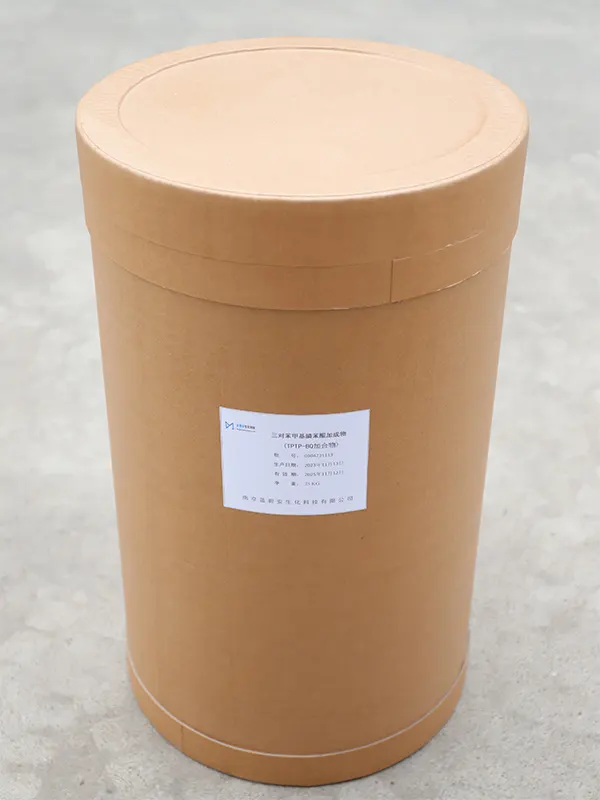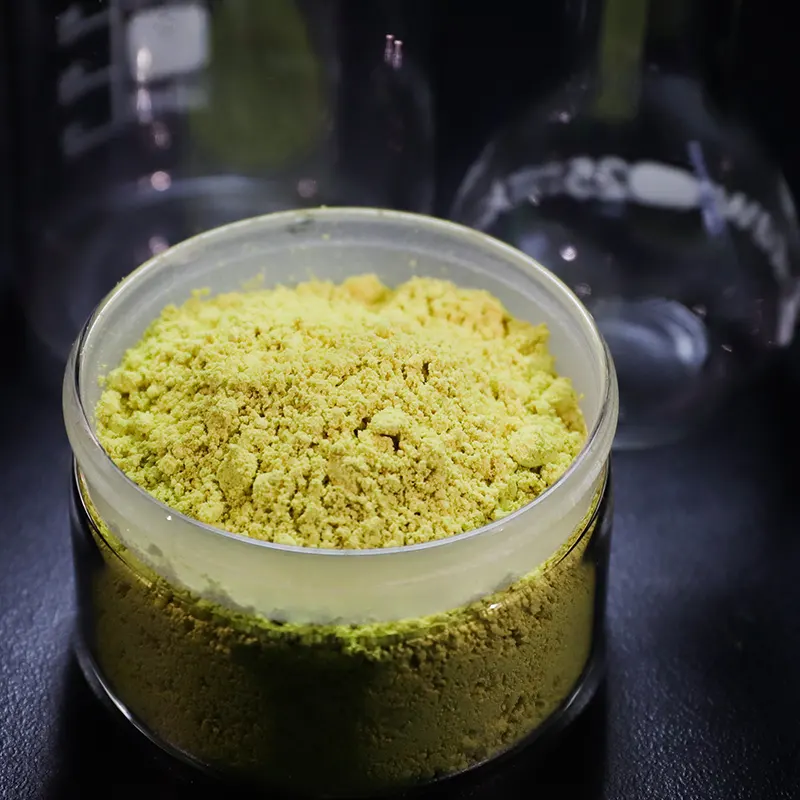Optimizing Curing Efficiency in Epoxy Molding Compounds
Epoxy molding compounds (EMC) are essential materials in the electronics industry, widely used for encapsulating semiconductor devices to protect them from moisture, dust, and mechanical stress. The performance and reliability of EMC systems are influenced by several factors, among which the curing accelerator plays a vital role. Selecting the best EMC curing accelerator for a specific application requires a thorough understanding of formulation needs, processing conditions, and performance targets.
The choice of curing accelerator affects not only the cure speed but also the thermal stability, flow behavior, adhesion, and final mechanical properties of the EMC. To ensure optimal outcomes, manufacturers must balance reactivity and stability while considering compatibility with other compound components. This article explores the key considerations and decision-making strategies involved in selecting an EMC curing accelerator tailored to specific process and application requirements.
Role and Function of Curing Accelerators in EMC Systems
Reaction Kinetics and Cure Profile Management
Curing accelerators in EMC formulations are designed to enhance the reaction rate between the epoxy resin and the hardener, often an anhydride or amine. By accelerating crosslinking, these additives help achieve full cure in shorter cycle times and at lower temperatures. This not only improves productivity but also reduces thermal stress on sensitive electronic components.
The accelerator influences the onset temperature of the cure, peak exothermic reaction temperature, and the time required to reach complete cure. Adjusting these parameters ensures that the EMC cures efficiently without compromising on flow or moldability during processing.
Influence on Mechanical and Thermal Properties
The type and concentration of EMC curing accelerator impact the final properties of the cured compound. Accelerators can influence the glass transition temperature (Tg), coefficient of thermal expansion (CTE), adhesion to substrates, and modulus development. The selection of an appropriate accelerator allows tailoring of the EMC to withstand specific mechanical loads and thermal cycles.
Different applications may demand different property balances. For example, automotive electronics require high thermal stability, while mobile devices may prioritize low-stress and thin-package capabilities. In each case, the EMC curing accelerator must support these end-use performance targets.
Types of Curing Accelerators and Their Characteristics
Imidazoles, Amidine, and Urea Derivatives
Imidazoles are among the most commonly used EMC curing accelerators due to their high reactivity and good thermal stability. Even at low loadings, they initiate fast and effective crosslinking. Variants such as 2-ethyl-4-methylimidazole (2E4MI) offer tunable reactivity profiles and are compatible with various epoxy systems.
Amidine and urea derivatives are used when a moderate acceleration effect is desired, providing a balance between flowability and cure speed. These accelerators are useful in formulations where thermal stability and a controlled exothermic reaction are critical.
Tertiary Amines and Phosphine-Based Catalysts
Tertiary amines are widely used as EMC curing accelerators for their versatility and economic benefits. They provide fast cure initiation and work well in amine-cured systems. However, their volatility and tendency to migrate can be drawbacks in high-temperature applications.
Phosphine-based catalysts, although less common, offer strong acceleration with high thermal resistance. They are effective in high-performance EMCs used in power semiconductor devices and applications requiring extreme reliability.
Application-Specific Selection Criteria
Substrate Compatibility and Adhesion Requirements
Different substrates such as silicon, copper, or plastic leadframes exhibit unique surface chemistries that can affect adhesion. The EMC curing accelerator must promote strong interfacial bonding while minimizing delamination risk during thermal cycling.
Surface pre-treatment, coupling agents, and resin compatibility also play roles in ensuring proper adhesion. Selecting an accelerator that complements the total system improves both initial adhesion and long-term durability of the EMC encapsulant.
Processing Conditions and Mold Flow Behavior
The selection of an EMC curing accelerator must align with the molding equipment, temperature profiles, and cycle times used in production. Accelerators that cure too quickly may lead to premature gelation, while those that cure too slowly may reduce throughput and require higher energy input.
Understanding the interaction between the accelerator and resin flow is essential. Some accelerators affect the viscosity and flow time of the compound, impacting mold fill and void formation. Rheological testing and differential scanning calorimetry (DSC) are commonly used to characterize these effects.

Performance Optimization Through Formulation Strategy
Balancing Reactivity and Storage Stability
An effective EMC formulation must maintain a delicate balance between cure reactivity and shelf stability. Highly reactive accelerators may lead to shorter pot life and poor shelf stability, making them unsuitable for long-term storage or multi-step manufacturing.
To mitigate these risks, stabilizers or latent curing agents are sometimes incorporated alongside the accelerator. This approach allows the EMC to remain stable at room temperature while activating rapidly upon heating during molding.
Synergistic Effects with Fillers and Other Additives
Filler content, particle size, and surface treatment significantly influence the performance of EMCs. The curing accelerator must be compatible with the selected fillers to ensure uniform dispersion and consistent reactivity. Incompatible combinations may lead to uneven cure or poor mechanical performance.
In multifunctional EMCs, such as those with flame retardants or conductivity modifiers, the accelerator must not interfere with other additive functionalities. Carefully adjusting the accelerator level and selecting synergistic additives enables better control of the entire system.
Testing and Qualification for Industrial Use
Lab Evaluation and Cure Kinetics Analysis
Before implementation in production, candidate EMC curing accelerators should be evaluated in controlled laboratory environments. Thermal analysis methods such as DSC provide insight into the cure profile, including onset temperature, exotherm peak, and total cure enthalpy.
Complementary testing, including viscosity measurement, gel time determination, and tack-free assessment, helps determine process suitability. Mechanical property testing of cured samples validates whether the chosen accelerator meets application-specific performance goals.
Reliability and Aging Studies
To ensure long-term reliability, the EMC system with the chosen accelerator must undergo accelerated aging tests, such as high-temperature storage, thermal shock, and humidity exposure. These tests simulate real-world operating conditions and reveal potential failure modes.
Monitoring adhesion, mechanical strength, and dimensional stability over time helps predict service life. A well-qualified EMC curing accelerator contributes to consistent product performance and customer satisfaction.
Frequently Asked Questions
What is the most commonly used EMC curing accelerator in semiconductor packaging?
Imidazoles, such as 2E4MI, are widely used due to their high reactivity, stability, and compatibility with epoxy systems.
How do I choose the right accelerator concentration for my EMC formulation?
Start with recommended levels from suppliers and fine-tune based on DSC data, mechanical testing, and flow behavior. Balancing reactivity and process window is key.
Can curing accelerators affect the thermal performance of EMCs?
Yes, accelerators influence crosslink density and thermal properties like Tg and CTE. Selection should align with thermal requirements of the end-use application.
Are there eco-friendly or low-emission EMC curing accelerators?
Yes, some accelerators are designed to minimize VOC emissions and meet environmental standards. Check regulatory compliance and material safety data sheets for details.
Table of Contents
- Optimizing Curing Efficiency in Epoxy Molding Compounds
- Role and Function of Curing Accelerators in EMC Systems
- Types of Curing Accelerators and Their Characteristics
- Application-Specific Selection Criteria
- Performance Optimization Through Formulation Strategy
- Testing and Qualification for Industrial Use
- Frequently Asked Questions

